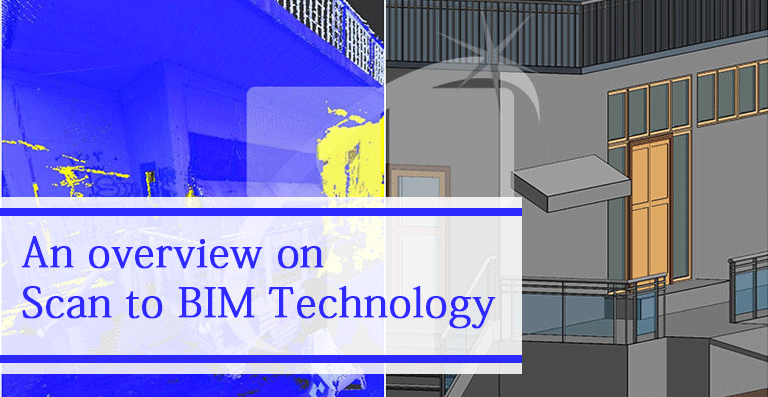An overview on Scan to BIM Technology

The most basic component in both structural and building design is precision. Remodelling, restoration, and renovation usually extend the difficulty of being accurate in such projects, on the grounds that the exact arrangement of existing structures and parts requires the highest level of detail. Acquiring basic data turns into a tedious and costly task, yet there is a superior way. Utilizing laser scanning and Revit (BIM) software, designers and architects can be more accurate, save time and be cost-effective at the same time.
Table of Contents
Accuracy and Precision Challenges while taking measurements
The inability to provide design accuracy in an architectural, engineering and construction (AEC) venture can create obliterating and expensive outcomes. Exact estimations and precise portrayal of the considerable number of instances found in a current structure are the most secure methods for evading errors. However, getting this data presents challenges, including:
- Precise exterior measurements: Depending on the structure taking accurate estimations of a structure’s exterior can be exceedingly difficult until you have specialized and professional equipment.
- Accurate interior measurements: This requires a primary sketch of inside conditions alongside repeated estimations.
- Position and placement of tools and components: Gathering exact position incorporates specialized tools and equipment along with access into the zones where they are located.
- To be able to get accurate results from scanning, it takes a lot of physical effort, time, and multiple trips to the site to get better results. The challenge to measure an existing structure often leads to a breakdown in accuracy.
- Tedious: Acquiring measurements and equipment position normally incorporates sketches, drawings, photos, estimations, and various trips to the site to affirm data.
- Costly: Including the expenses of specialized tools for scanning, numerous excursions to the site, time to make primary drawings, and work costs, gathering precise data of existing structures make the renovation project costlier.
Taking a progression of photos, which could be scanned and included into the computer with the help of CAD software, appears the perfect answer for these difficulties. That innovation as of now exists, and on a scale that gives a dependable degree of exactness using laser precision.
BIM
AEC experts use the data and tools of the intelligent 3D model-based data by BIM to improve plan, development, support and maintain both infrastructure and buildings. Basically, BIM Services has taken CAD to a level beyond the realm of bidding and construction plan-sets of the past and leveraged the mechanized intelligence as 3D and parametric object-based design to accomplish exactness and flexibility.
Revit
Among the most creative and innovative forms of BIM software, Revit gives full, bi-directional associativity to a CAD model. This implies a change anytime in a 3D model automatically refreshes all through the model without more client collaboration. This is conceivable because BIM isn’t a progression of lines, yet a representation of real-world 3D buildings. Revit gives consistent updates, yet it keeps a relational database of the whole history of the model. Recent advancements to Revit have given the conduit through which scanned pictures coordinate into CAD with accuracy and precision.
Laser Scanners
The accuracy of the data conveyed to Revit is a basic component in the overall precision of BIM. A more noteworthy degree of precision is achievable through laser scanners, which have seen many technological innovations in the past decade. Laser scanners can record the shapes and the presence of structures and items in the field, converting them into point cloud data points. Point Cloud to BIM Services helps in creating and updating 3D models utilizing the point cloud data points to build the different existing items and components with true dimensional exactness.
Conclusion
The principle repressing component to the utilization of laser scanners by AEC experts does not identify with exactness or the accessibility of BIM frameworks, however to the expense of laser scanners. Up to this point, the acquisition of a 3D laser scanner with the necessary degree of exactness has required a six-figure investment.
The expense of laser scanning equipment, BIM software, client direction, and the frameworks required to work them represents a huge amount of investment. 3D scanning technology is simply an incremental technological advancement of surveying, providing a safer, richer, and more rapid method of spatial data acquisition for surveying applications. However, an investment in this laser scanning to BIM technology can lead to enormous growth for the firms. Fundamentally, laser scanning combined with Revit BIM technology gives a cost-effective arrangement, which balances the underlying investment.

